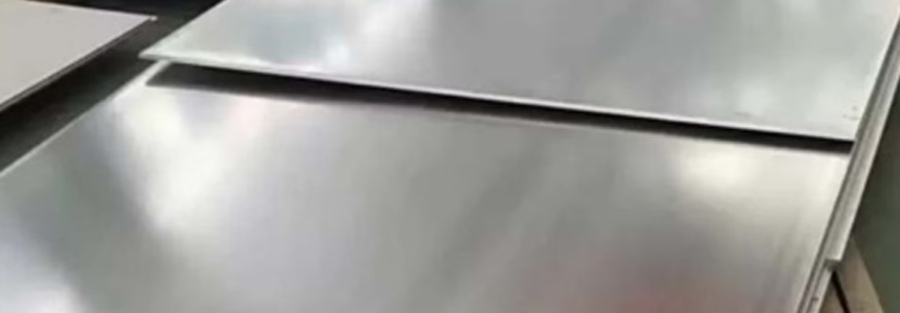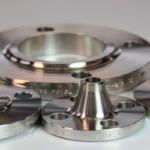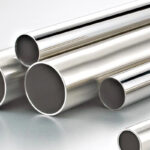What Is Aluminized Steel? Properties, Types, and Industrial Applications
When industries require materials that can withstand high heat, resist corrosion, and maintain strength over time, aluminized steel often becomes the material of choice. But what exactly is aluminized steel? What properties make it so valuable, and where is it used? In this detailed guide, we’ll explore what aluminized steel is, its properties, types, and the most common industrial applications.
What Is Aluminized Steel?
Aluminized steel is carbon steel that has been coated with an aluminum-silicon alloy through a hot-dip process. This coating combines the strength and affordability of steel with the corrosion resistance and heat reflectivity of aluminum. The result is a material that’s durable, heat-resistant, and suitable for applications that demand long-lasting performance under extreme conditions.
The typical aluminum coating contains approximately 90% aluminum and 10% silicon. The silicon improves adhesion and protects the steel during the hot-dipping process, ensuring a strong metallurgical bond between the steel substrate and the aluminum layer.
Properties of Aluminized Steel
Aluminized steel is popular in manufacturing, construction, and automotive industries due to its unique combination of mechanical and chemical properties.
1. Corrosion Resistance
Thanks to the aluminum-silicon coating, aluminized steel offers excellent resistance to oxidation and rust. The coating provides a barrier that protects the steel substrate from moisture, chemicals, and atmospheric elements.
2. Heat Resistance
Aluminized steel can withstand temperatures up to 900°F (482°C) without losing its structural integrity or suffering from scaling. This makes it ideal for high-temperature environments like ovens, furnaces, and exhaust systems.
3. Thermal Reflectivity
The surface of aluminized steel has high reflectivity, which helps retain and reflect radiant heat. This property makes it highly efficient in applications that require thermal management.
4. Formability and Weldability
Aluminized steel is relatively easy to form, bend, and stamp, making it versatile for various manufacturing processes. It is also weldable using appropriate techniques, although care must be taken to avoid damaging the coating.
5. Aesthetic Appeal
Aluminized steel has a smooth, bright, and silvery appearance that enhances product aesthetics. It is often used where appearance and corrosion resistance are both important.
Types of Aluminized Steel
There are two main types of aluminized steel — each designed for specific performance characteristics and applications.
Type 1 Aluminized Steel
- Composition: Coated with approximately 90% aluminum and 10% silicon.
- Key Features:
- Superior heat resistance
- Excellent corrosion protection in high-temperature environments
- Strong metallurgical bond
- Applications:
- Automotive exhaust systems
- Industrial ovens
- Furnaces
- High-temperature ducting
Type 2 Aluminized Steel
- Composition: Pure aluminum coating without silicon.
- Key Features:
- Exceptional corrosion resistance in non-extreme temperatures
- Less heat resistance than Type 1
- More suited for atmospheric exposure and moisture protection
- Applications:
- Water heaters
- Agricultural equipment
- HVAC systems
- Outdoor storage tanks
Industrial Applications of Aluminized Steel
Aluminized steel is used in a wide range of industrial sectors due to its durability, heat resistance, and corrosion protection. Here are the key industries and examples of where aluminized steel sheets, plates, and coils are used:
1. Automotive Industry
- Exhaust Systems: Aluminized steel is the standard material for automotive exhaust pipes, mufflers, and catalytic converter housings due to its ability to withstand heat and corrosive gases.
- Heat Shields: Used in engine compartments to reflect heat away from critical components.
2. HVAC Systems
- Ductwork: Aluminized steel coils are often used in heating and ventilation systems for both residential and commercial buildings.
- Furnace Linings: The material’s thermal reflectivity and corrosion resistance make it ideal for use in industrial and home furnace linings.
3. Industrial Ovens and Furnaces
- Oven Liners: High-temperature baking ovens, industrial kilns, and commercial cooking equipment rely on aluminized steel for internal surfaces that endure continuous exposure to heat.
4. Water Heating Equipment
- Water Heater Tanks: Type 2 aluminized steel is frequently used in manufacturing water heater tanks due to its corrosion resistance and ability to handle warm, humid environments.
5. Agriculture
- Grain Storage Silos and Outdoor Equipment: Farmers use aluminized steel for silos, feeders, and structures that need to withstand weather exposure and moisture without rusting.
6. Power Generation
- Heat Exchangers and Chimney Linings: In power plants, aluminized steel is used in areas exposed to high temperatures and corrosive gases, helping to maintain safe, long-term operation.
7. Construction Industry
- Roofing Panels and Wall Claddings: Certain architectural applications leverage the aesthetic finish and weather resistance of aluminized steel.
Advantages of Aluminized Steel
- High-Temperature Performance: Can handle extreme heat without distortion or scaling.
- Corrosion Protection: Long-lasting resistance to rust, both in atmospheric and high-temperature environments.
- Cost-Effective: Offers excellent performance properties at a fraction of the cost of stainless steel.
- Lightweight: Less dense than stainless steel while still offering durability.
- Easy to Fabricate: Adaptable to welding, bending, and stamping operations.
Limitations of Aluminized Steel
- Not Suitable for Highly Acidic or Alkaline Environments: The coating may deteriorate in extreme chemical conditions.
- Welding Requires Special Precautions: Improper welding can damage the protective coating, leading to localized corrosion.
- Less Strong Than Stainless Steel in Some Applications: While durable, it may not be as mechanically strong as certain stainless steel grades.
Aluminized steel is a versatile, high-performance material that combines the strength of steel with the corrosion and heat resistance of aluminum. With two main types (Type 1 for high-heat environments and Type 2 for atmospheric corrosion protection), it has a wide range of industrial applications — from automotive exhaust systems and industrial ovens to HVAC systems and agricultural equipment.
By understanding the properties and uses of aluminized steel sheets, plates, and coils, engineers, procurement managers, and manufacturers can make informed decisions for their projects.
Need Help Choosing the Right Aluminized Steel?
If you’re unsure which aluminized steel grade or type suits your application best, our experts are here to help. Contact us today for expert advice and competitive pricing on aluminized steel sheets, plates, and coils.




